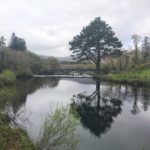Minister Malcolm Noonan introduces the draft River Basin Management Plan…
The EPA is hiring… would you like to work on with us on environmental data science and modelling?
The EPA’s Evidence and Assessment team is currently hiring people to work on data science and modelling, and other key roles in the Water Programme. There are two data science and modelling roles open in the Catchments Unit, and one in Environmental Analytics.
The successful candidates will fulfil the role of Scientific Officer I (Level 3). In addition to data science and modelling, two other roles in the EPA Water Programme are also currently open:
- Scientific Officer I (Level 3) – Ecological Monitoring and Assessment
- Scientific Officer I (Level 3) – Hydrometric Regional Lead
Data Science and Modelling
Initial vacancies arise in the Environmental Analytics Team and in the Catchment Science and Management Unit in the Office of Evidence and Assessment (OEA) and will be based in Wexford or Dublin. A panel will be formed from which future Scientific Officer I (Level 3) Environmental Data Science and Modelling vacancies may be filled in EPA Headquarters Wexford or EPA Regional Inspectorate Dublin.
The Office of Evidence and Assessment (OEA) is the primary source of integrated assessment and evidence-based scientific advice on Ireland’s environment.
The OEA strives to be a trustworthy champion for the environment by providing timely, accurate and tailored environmental data, information and assessment to the public and other stakeholders to help them make informed decisions. Specifically, this requires the application of environmental data science and modelling skills in the following areas:
- Integrated assessment of the impacts of different environmental pressures to determine environmental status, diagnose environmental threats and model possible scenarios
- Identification of environmental risk to create risk maps or models
- Understanding of the potential for earth observation and remote sensing techniques as sources of environmental evidence, and how this information can be accessed and interpreted to provide environmental evidence
- Perform integrated catchment assessments using multiple datasets from different sources
- Preparation of data to facilitate science communication including the development of online data visualisation solutions
The successful candidate(s) will be responsible for leading the development of spatial modelling and assessment tools to evaluate the pressures impacting on the environment. The role(s) will have a strong emphasis on the use of spatial data science to assess the interrelationships between human activities and the environment, in space and time. The ideal candidate(s) will have an aptitude for spatial analysis and programming, and an ability to conceptualise, develop and implement innovative data science approaches to evaluating the pressures impacting the environment. Strengths in, and a commitment to, significant collaboration with colleagues and stakeholders will be important.
Catchments Unit
The Catchment Science and Management Unit role is to assess the risks and pressures impacting on the water environment and assess changes in water quality. All the work is carried out within an integrated catchment management framework.
A key role of the team is to develop and maintain a suite of tools, models, maps and other outputs for assessing the sources and impacts of excess nutrients in the water environment and the contribution of
physical changes to the ecological health of rivers. These assessments provide the scientific evidence base needed to inform policy and action to improve water quality and overall aquatic ecosystem health.
Environmental analytics
The Environmental Analytics Team role is to provide data analysis and data science expertise via four main services:
- Point in time analytics, that combines spatial and non-spatial data to arrive at new environmental evidence or insights
- Self-service insights, helping EPA teams to develop and visualise metrics and trends via self-service reports or dashboards
- Statistics and analytical capability, using and applying statistical processes and methods to verify the trustworthiness of EPA evidence and coaching staff on statistical methods
- Creating graphics for science communication.
Spatial data science is a core skill of the Environmental Analytics team, across these four analytics services.
Learn more:
Data science and modelling: https://www.epa.ie/publications/corporate/careers/scientific-officer-i–environmental-data-science-and-modelling.php
You can view all vacancies on the EPA website: Current Vacancies | Environmental Protection Agency (epa.ie)
This includes current vacancies in the EPA Water Programme in Ecological Monitoring and Assessment and Hydrometrics.







